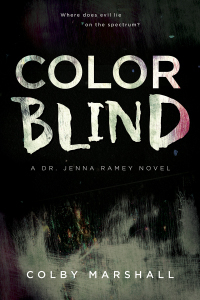Elizabeth Spann Craig's Blog, page 127
November 27, 2014
Dealing With Writer’s Block
by David Khara, @DavidKhara![Pageflex Persona [document: PRS0000038_00074]](https://i.gr-assets.com/images/S/compressed.photo.goodreads.com/hostedimages/1417201399i/12259721.jpg)
I wish I received a dollar every time someone asked me if I suffered from writer’s block—in France, they call it “the blank page syndrome.” You know, those moments when you want to write, you are ready to write, but you can’t seem to write a single word. Ideas keep coming to mind, but don’t seem to make sense. Or worse, every time you write a sentence down, you immediately erase it because you simply hate it.
Actually, I do no suffer from this syndrome, probably because I started writing novels at a fairly advanced age. Still, when I worked in advertising, I had this problem.
I was 21 at that time, and luckily enough, my boss taught me something that made quite a big difference, something I still believe in today: not writing is already writing.
What did he mean by that? Well, when it comes to creating, we all have a very specifically structured mind. For instance, when musicians walk in the streets, they don’t hear sound, they hear notes. Standup comedians do no hear conversations, they hear sketches, photographers see pictures, and so on.
When you can’t write, get out, leave the computer behind, go shopping, go to a movie, read a book, play videogames, have a drink with friends—do anything instead of staring at that bloody blank page. If you are truly a writer, getting back to ordinary life will fill your imagination, words pronounced around you will nourish your dialogue, and people will become characters.
The fun part of it is that you won’t be aware it happens, it just does, and when you go back to your pen or computer, words will simply flow without any problem. Try it, you’ll see.
Today, I don’t give writer’s block a chance to settle in. On some days, I wake up knowing I won’t be able to produce anything worthwhile so, I simply forget about it, confident in my ability to produce more the next day. And I do every time.
Writing is about action, knowledge, emotions, and these don’t come out of nowhere. They come from our past, our experiences, our connection to the world around us. Basically, writing is all about life, no matter what kind of book you’ll write.
So the only way to do it, is, obviously, to live your life. 
David Khara is the author of the Consortium Thriller series, which offer a roller-coaster ride that dips into the history of World War II, rushing back to present day with a loop-to-loop of action and humor. The Bleiberg Project was an instant success when it was first released, and The Shiro Project just came out in paperback, published by mystery and thriller publisher Le French Book. The third book in the series, The Morgenstern Project is scheduled for release in English spring 2015.
The post Dealing With Writer’s Block appeared first on Elizabeth Spann Craig.
November 23, 2014
Going from ‘Pantster’ to Outliner
by Elizabeth Craig, @elizabethscraig
I loved the organic, ‘pantster’ approach to writing. I followed the genre-determined general structure (meet victim, meet suspects, question suspects…) and then happily made up each story as I went along.
This worked really well until I started writing three books a year…a book each for several different series. Then, apparently, I was juggling too many balls at once and I had to give myself more of a plan to follow.
I’ve got a post up on Writer Unboxed, which is a great resource for writers if you’re not familiar with it. My post covers how and why I changed to outlines and what I learned from the experience, analyzing my results. Hope you’ll pop over.
The post Going from ‘Pantster’ to Outliner appeared first on Elizabeth Spann Craig.
November 22, 2014
Twitterific Writing Links
by Elizabeth S. Craig, @elizabethscraig

Twitterific writing links are fed into the Writer’s Knowledge Base search engine (developed by writer and software engineer Mike Fleming) which has over 23,000 free articles on writing related topics. It’s the search engine for writers.
Examples of using kernel ideas to write your book: http://ow.ly/EqgzV @bob_mayer
The missing author mystique–authors and social media: http://ow.ly/EGq4O @Porter_Anderson @writerunboxed
Writing a Novel? 6 Visual Storytelling Techniques to Borrow From Film and TV http://ow.ly/EqgzZ @CSLakin
6 Ways To Let Others Do Your Book Marketing For You: http://ow.ly/EqgA3 @SarahAllenBooks
How clichés and tropes can be useful for writers: http://ow.ly/EqgA9 @fictionnotes
Your Author’s Photo – 7 Tips to Getting it Right http://ow.ly/EqgAd @djeanquarles
A Look at a Fantasy Query: Would You Want to See More? http://ow.ly/EqgAi @Janice_Hardy
A Simple Bedtime Routine To Get Writing The Next Day: http://ow.ly/EqgAl @finallywriting
RT @Porter_Anderson: @Elsevier a new #publisher in #ebook-bundling with @BitLitMedia http://ow.ly/EBu8r @TheBookseller
4 Free Writing Contests for Self-Published Authors: http://ow.ly/Ext9o @ericaverillo
Story structure made simple: http://ow.ly/Ext9u @storyfix
3 Ways Your Characters Could Forgive … Or Not: http://ow.ly/Ext9x @skyefairwin
Staple characters in classic/Golden Age mysteries: http://ow.ly/Ext9E @mkinberg
Inspirational Fiction–to preach or not to preach http://ow.ly/Ext9K @territiffany1
Adult Non-Fiction Retrofitted for YA Readers: http://ow.ly/Ext9M @pubperspectives
Bloated writing–worst offenders: http://ow.ly/Ext9U @Jen_328
The Secrets of Subtext: http://ow.ly/Ext9Y @StinaLL
Writing conversations–what to keep, what to edit out: http://ow.ly/Exta4 @JacksBlackPen
Amazon is not a robber baron: http://ow.ly/Extaa @JAKonrath
Effective Use of Foreshadowing: http://ow.ly/Extag @DaxMacGregor
5 tips for writing a sequel: http://ow.ly/Extal
Blurbing–authors and fake praise: http://ow.ly/EET0T @medium @jasonsanford
The Pomodoro Technique® for Writers: http://ow.ly/EET0W by Sharon Arthur Moore
Persuasive Writing Checklist: http://ow.ly/EET0Z @writers_write
A writer’s goal is to persist again and again. http://ow.ly/EET11 @BishsBeat
Supercharge Your Writing Using This Cinematic Technique: http://ow.ly/EET13 @writetodone
On Rejection and Renewal: http://ow.ly/EET14 @WarrenAdler
Free Help With Graphic Design: http://ow.ly/EEPmL
Deconstructing Micro-Tension http://ow.ly/EqgzQ @jan_ohara @writerunboxed
How to Deflate those Inflated Phrases: http://ow.ly/EqgzN @writers_write
#EthicalAuthor Code at #FutureChat 11aET/4pGMT (now) http://ow.ly/ECSLC @IndieAuthorALLi @Porter_Anderson
5 Traits to Help You Create Your Character’s Personality http://ow.ly/EqgzI @Janice_Hardy
A breakthrough for ‘Ethical Authors’? http://ow.ly/EENT6 @Porter_Anderson @IndieAuthorALLI
How to Transform Your Inner Critic Into an Inner Cheerleader: http://ow.ly/EqgzD @finallywriting
Science fiction – have we forgotten what it should be? http://ow.ly/Eqgzx @Roz_Morris
Taxis in crime fiction: http://ow.ly/EEKIo @mkinberg
BitLit partners with pubs to offer discounted ebook editions of our print library: http://ow.ly/ECPFB @Porter_Anderson @BitLitMedia
The Marketing Muscle Behind The NBA Finalist “Station Eleven”: http://ow.ly/EAPJc @Porter_Anderson
4 Tips for Writing for the Romance Market: http://ow.ly/EmKyn @jessicainclan
Don’t Know Your Story’s Theme? Take a Look at Your Character’s Arc: http://ow.ly/EmKyl @KMWeiland
Dialogue Tags: Getting Rid of Them: http://ow.ly/EmKyi @SharlaWrites
Screenwriting: 5 Reasons to Use an Online Writing Network: http://ow.ly/EmKyh @jeannevb
9 Qualities Writers Should Look for in a Co-Blogger: http://ow.ly/EmKyf @brianaknorth
Best Films About Writers, Ranked: http://ow.ly/EmKye @flavorwire
Help with naming characters: http://ow.ly/EmKyc @AlisonPotoma
Are Your Characters Talking Too Much? http://ow.ly/EmKya @PATRICKRWRITES
A TED talk on the art of the metaphor: http://ow.ly/EmKy9
4 book publicity tips: http://ow.ly/EmKy8 @sandrabeckwith
The Ethical Author Code: http://ow.ly/EAOQ1 @OrnaRoss @Porter_Anderson
A Writer’s Babelcube Experience: http://ow.ly/EmKy5 @Jason_Matthews
17 Ways To Make your Novel More Memorable: http://ow.ly/EmKy2 @writers_write
World-Building — Planning Your Setting http://ow.ly/Eh84u
The Best Alien Characters in SF (and What Makes Them so Successful): http://ow.ly/Eh84p @sfsignal
Tools 1 Writer Used to Improve Writing Workflow: http://ow.ly/Eh84i @WilliamKing9
6 Tools to Make Your Life Easier: http://ow.ly/Eh84g @RachelleGardner
3 Tips for Using Color Theory In Your Writing: http://ow.ly/Eh84d @robinrwrites
Preposition Mistakes: http://ow.ly/Eh849 @writing_tips
Secondary Characters Have a Primary Role: http://ow.ly/Eh845 @hopeclark
5 tips for writing a romance: http://ow.ly/Eh841 @WritersCoach
12 Reasons for Writers to Love Facebook: http://ow.ly/Eh83Y @beckyajohnson
An example showing improvement of writing flow: http://ow.ly/Eh83X
Is Crowdsourced Editing Right for Your Book? http://ow.ly/Eh83R @CarlaJDouglas @byondpapr
A tactical guide to slaying your writing demons: http://ow.ly/Eh83N @SuddenlyThurs
Tips for physical description in first person: http://ow.ly/EeIV0
Encouragement for Writers Who Don’t Know If They Should Keep Going: http://ow.ly/EeIUW @jodyhedlund
Memoir or Novel? 8 Issues to Think About Before Writing Your Own: http://ow.ly/EeIUV @LeslieLehr1
How the Antagonist Affects Character ArcThe Story Department: http://ow.ly/EeGln @KMWeiland
Dreams vs. Goals: Give Your Writing Dreams Marching Orders: http://ow.ly/EeIUU @kayedacus
3 Tips For a Better First Revision: http://ow.ly/EeIUR @aeskens
When Should You Change Your Book for an Agent or Editor? http://ow.ly/EeIUO @brooke_warner
Why Writers Love Red Herrings: A Brief Guide: http://ow.ly/EeIUI @epbure
How to Increase Your Income By Writing Short Books: http://ow.ly/EeHIb @ninaamir
Tips for Revisiting a Shelved Manuscript: http://ow.ly/EeIUF @LaurieTomlinson
16 Tips for Writing the Cozy Mystery: http://ow.ly/EeIUC
How to Monetize ‘Free': http://ow.ly/EeIUz @bookgal
Tips for writing horror: http://ow.ly/EqgVi @booksthatmatter
9 Reasons Readers Get Bored: http://ow.ly/E6KD5 @ingridsundberg
Beware the Action Beginning: http://ow.ly/E6KCS @behlerpublish
3 Ways to Build a Stronger Story: http://ow.ly/E6KCQ @willb_sullivan
Writing Fiction? 21 (or 22) Things A 21-Year-Old Should Be Doing: http://ow.ly/Eq7wA @joshspilker
11 Novelist-Tested Ways to Defeat Writer’s Block: http://ow.ly/E6KCM @WarrenAdler
Noncompete Clauses in Contracts – What are we agreeing to? http://ow.ly/E6KCJ @tinagabrielle
Targeting Our Book Promo: http://ow.ly/E6KCC @CaballoFrances
How to Write a Scary Story: http://ow.ly/E6KCz @EmilyWenstrom
Sampling: An Effective Marketing Tool: http://ow.ly/E6KCu
Changing roles for a subplot: http://ow.ly/E6KCq @glencstrathy
3 Ways to Know If Your YA Fiction Is Really New Adult Fiction http://ow.ly/E6KCl @fictionnotes
Tips for continuing on with #NaNoWriMo: http://ow.ly/Eo2YB @JL_Campbell
5 things one reader wants to see in horror: http://ow.ly/E6KD8 @Pabkins
Creating Strong Characters: Tips for Handling Challenges: http://ow.ly/Eqc83 from Jack Smith
5 Traits of Seriously Despicable Villains: http://ow.ly/E6KCX @SarahAllenBooks
How to Get a Platform Like a Reality Star: http://ow.ly/E6KCO @brrbach
Indie publisher launches the EverAfter app for romance readers: http://ow.ly/EmMgo @Porter_Anderson @scottwaxman
10 Lessons from Plot & Structure: http://ow.ly/E3H7k @jamesscottbell
Crime Writers: Autopsy: From Crime Scene To Toe Tag: http://ow.ly/EmKuZ @LeeLofland
The 10 strangest twists on classic horror tales: http://ow.ly/E3FVk @blastr
Tips for Reimagining Fairytales: http://ow.ly/E3I9e @woodwardkaren
3 tips for crafting characters: http://ow.ly/E3GBx @RogerDColby
4 tips for crafting a hero: http://ow.ly/E3HdC @shalvatzis
Unusual Work Habits of Great Writers: http://ow.ly/E3Gns @wherewriterswin
The post Twitterific Writing Links appeared first on Elizabeth Spann Craig.
November 20, 2014
Free Help With Graphic Design
By Elizabeth S. Craig, @elizabethscraig
I’m design-challenged. 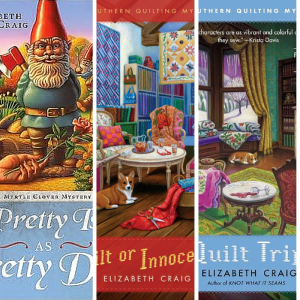
I learned this early. My father was a teacher and when I was in elementary school, one of my father’s friends (also a teacher) knew I was very creative and asked me to create a back-to-school bulletin board for her students.
I loved the huge box of art supplies that she brought over. Tissue paper, construction paper, markers, stickers, stencils. I loved it. But I didn’t know what to do with it. I ended up making a tissue paper flower that was about 6 inches in size. I couldn’t for the life of me figure out how to make an entire bulletin board and fill up all that space. The teacher had to scrap the idea.
For my books and for my website, I’ve been smart and hired designers. But I kept making my own Google+, Facebook, and Twitter covers or headers. And kept doing a very bad job.
But now I’ve found help. It’s Canva and I discovered it while I was going through my RSS feed and read a post by agent Rachelle Gardner, “6 Tools to Make Your Life Easier” that mentioned the site.
It’s free unless you use one of their images, which are $1 apiece. But if you’re like me, you’re wanting to use your own book covers or author photo or whatever and won’t need anything from them. I like not spending money.
Let’s say we want to make a Twitter cover. I made one myself prior to using Canva and it was…absolutely ghastly. But using Canva, it was easy because they sized the pictures correctly. When I did it myself, everything was warped and blurred and weird.
So you click “Twitter cover” (you’ll have to scroll to get there) at the top of the Canva page (after you’ve created an account (which is free) there:

First of all, you choose a layout for the background. They have quite a few, just scroll down.

If you’ve got a few books out, you could choose one of the layouts with several or more spots for covers. Like maybe this one:

Then you upload your covers or other pictures. There is an upload button and arrow at the bottom of the left-hand menu.

Once they’re uploaded, you just drag them from the galley on the left hand side under the menu. If your covers are like mine, they’ll look like this at first:
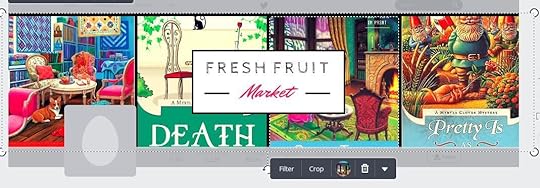
So you’ll either want to resize the covers (using your computer or another app) or crop them to show what you want. Click “crop” under the cover you’re working on and it brings up a window so that you can drag your cover to show the area of design you want to highlight, then you click the checkmark.
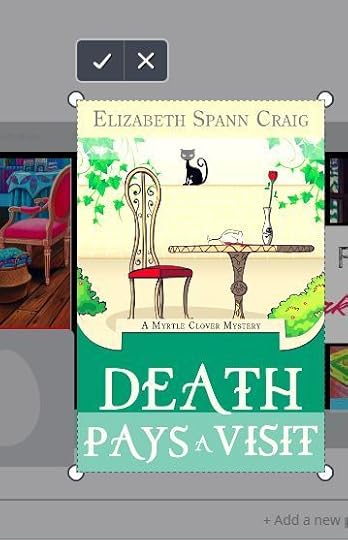
You can even flip your cover vertically or horizontally if there’s a cover element you want showing that’s not being highlighted. Obviously, you would not want to do this with a section of a cover that has text on it.

For the text elements that are in the layouts of some designs, you just click on the text box and a menu pops up to help you change the text or the text box itself.

So you come up with something like this, which is the one that I loaded onto Twitter:

Then you click ‘download’ at the top right of the page, and then you’ve got either a link or you can download an image or a PDF.
I will point out that one of the projects you can do on here is a Kindle cover. But y’all…I still say go with a pro for this stuff…it’s worth it. Use this for a social media design. But, I don’t know, if you have a short story or some really small project or you’re just experimenting with publishing on Kindle…sure, this might work for something like that.
Have you run across any helpful sites lately? Are you design-challenged, too?
The post Free Help With Graphic Design appeared first on Elizabeth Spann Craig.
November 17, 2014
Creating Strong Characters—Some Typical Challenges
Guest Post by Jack Smith
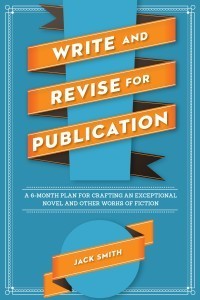
To write a publishable novel, you must cover a lot of bases. This means handling a number of fictional elements seamlessly. Chief among these is creating a strong protagonist, one that is believable as well as compelling.
It’s one thing to speak of a strong character in the abstract, another to create one in a novel. If you’re like most writers, you continuously face any number of challenges, and since each novel is different, each set of challenges is different.
There are, of course, some standard character issues every writer eventually faces.
And so let’s mull over some of these . . .
Is your protagonist stereotypical? Cardboard? And if so, how could you make this character more complex? Which character traits would you add to round out your character more? Should you make your character ambivalent at times? Should you work in a few contradictory elements that might be explained in some way? Should your character be confused, muddled, perplexed at times—like most people are? Should your protagonist exhibit different reactions to antagonists than the ones you’ve presently shown?
Related to the foregoing, is your protagonist too predictable? If so, can you find ways to provide more suspense? In dialogue perhaps? In actions? In character thoughts?
If your protagonist is a so-called bad guy, not sympathetic, do you find ways to keep the reader’s interest? If the reader’s not exactly going to root for this character, do you make the character compelling enough that the reader just has to follow along—to see what’s about to occur next? Do you make the bad guy character emblematic of a particular culture or ethos—organized crime perhaps, so that the reader will most likely say, “Okay, now I’ve got a better handle on how this works. . .” (Consider The Sopranos.)
Do your scenes reveal your protagonist’s chief characteristics but also drive the plot? Would different scenes work better to accomplish both of these? Could you work in different or additional material within these scenes to better accomplish these two objectives?
Do you give your protagonist enough inner life? Most readers like to sense a character’s inner being, especially if this involves internal conflict. If you do manage to do this, how gripping is your internal sphere for this character? Do you capture character thoughts and feelings with some force? Doing so takes a good handle on expository prose.
Does your protagonist change enough? Given the nature of the experiences your protagonist has gone through, should your character be more profoundly affected? But where is the line between just enough and too much? It’s most likely not enough if your protagonist is hardly affected by a siege of devastating outcomes; it’s most likely too much if s/he becomes somebody totally new without a vestige left of his/her former self. It’s hard to locate the believable slot on the scale of character change, zero to one hundred, but that’s what you’ve got to do. Once you know the answer to this, you’ll have a believable character arc in hand.
If a novel is going to be marketable, it must have a protagonist that keeps readers reading. Even if a novel is idea-driven, most readers want a character that pulls them in. (Roquentin of Sartre’s Nausea pulls me in.) The subjective element always comes into play, of course, and clearly if you pass your work from reader to reader, you will get different responses, different judgments on how well you’ve developed your character. It feels good when there’s common ground on both strengths and weaknesses. Ultimately, of course, you as the writer must be the final judge.
Jack Smith is author of the novel Hog to Hog, which won the George Garrett Fiction Prize (Texas Review Press. 2008), and is also the author of Write and Revise for Publication: A 6-Month Plan for Crafting an Exceptional Novel and Other Works of Fiction, published earlier this year by Writer’s Digest. His novel ICON was published in June 2014 by Serving House Books.
Prize (Texas Review Press. 2008), and is also the author of Write and Revise for Publication: A 6-Month Plan for Crafting an Exceptional Novel and Other Works of Fiction, published earlier this year by Writer’s Digest. His novel ICON was published in June 2014 by Serving House Books.
Over the years, Smith’s short stories have appeared in North American Review, Night Train, Texas Review, and Southern Review, to name a few. He has also written some 20 articles for Novel & Short Story Writer’s Market, as well as a dozen or so pieces for The Writer. He has published reviews in numerous literary journals, including Ploughshares, Georgia Review, Missouri Review, Prairie Schooner, American Review, Mid-American Review, and the Iowa Review.
The post Creating Strong Characters—Some Typical Challenges appeared first on Elizabeth Spann Craig.
November 15, 2014
Twitterific Writing Links
by Elizabeth S. Craig, @elizabethscraig

Twitterific writing links are fed into the Writer’s Knowledge Base search engine (developed by writer and software engineer Mike Fleming) which has over 23,000 free articles on writing related topics. It’s the search engine for writers.
3 Methods to Trigger Story Ideas: http://ow.ly/E0a5y @galleycat
When we get a bad review–top 5 most scathing book reviews : http://ow.ly/E0a7s @guardianbooks
The 5 Screenwriter Stages: http://ow.ly/E0arf @scriptshadow
What to do with your manuscript after NaNo: http://ow.ly/E09Ig @Rachellkent
A Book in 30 Days: What Writers Can Learn From Rapid Publishing: http://ow.ly/E09EZ @AmandaBabs1
New Literary Publications to Watch: http://ow.ly/E09U9 @flavorwire
6 ways to write your title: http://ow.ly/E09Ob @amabaie
One Word to Transform Your Writing http://ow.ly/E09t9 @write_practice
10 tips for keeping your script fast-paced: http://ow.ly/E0agX @scriptmag
Stages of Revision http://ow.ly/E1tUf @nataliewhipple
Writing Action Scenes: http://ow.ly/E1vpR @jonrog1
When You Feel Invisible in the Crowded Book Market: http://ow.ly/E1u45 @jodyhedlund
Building a Bestseller: http://ow.ly/E1u01 @DavidGaughran
When What You Don’t Know Trumps What You Do Know: http://ow.ly/E1u9i @storyfix
#NaNoWriMo: How to make writing a novel easier than it looks: http://ow.ly/E1u2l @rchazzchute
Writing a good novel ending: http://ow.ly/E1vrk @rxena77
How Not to Register Copyright: http://ow.ly/E1vmM @victoriastrauss
5 Things Learned Between Deal & Debut: http://ow.ly/E1tNc @andeehannah @PenandMuse
The Perils of Writing a Series: http://ow.ly/E1tQv @VioletteMalan
10 Tips for Finding Motivation When You Don’t Have Any: http://ow.ly/E1tXb @ajackwriting
Adapting A Novel And Other Lessons Learned From London Screenwriter’s Festival: http://ow.ly/E1u5C @thecreativepenn
Talents and Skills Thesaurus Entry: Strategic Thinking: http://ow.ly/E3ld1 @beccapuglisi
Putting our work through the Bechdel Test: http://ow.ly/E3Geg @wordsxo
10 Short Story Competitions To Enter Before The End Of 2014: http://ow.ly/E3kNo @writers_write
How NanoWriMo Hones Your Fiction Skills: http://ow.ly/E3IGx @lindasclare
5 Things “The Crucible” Can Teach Us About Good Writing: http://ow.ly/E3Hye @rogerdcolby
How to Write Chapter Endings That Make Readers Want to Turn the Page: http://ow.ly/E3I1p @annerallen
Pros and Cons of Switching Genres: http://ow.ly/E0amk @SummeritaRhayne
5 Ways to Modify NaNoWriMo: http://ow.ly/E0apT @writersdigest
Why Stephen King’s Road to Hell is Paved With Adverbs: http://ow.ly/E0a2V @OffTheShelf
How to Work with a Book Designer: http://ow.ly/DY4tF @1106Design
Finding Time to Write: Retreats: http://ow.ly/DY5QQ @KnowlesMarianne
Should writers blog? http://ow.ly/DY4Bs @Jason_Matthews
How 1 writer’s mother gave her the importance of place: http://ow.ly/DY5qq @kimtriedman
6 Hot Trends in Indie Book Marketing: http://ow.ly/DY4Sw @wherewriterswin
3 Lessons Gone Girl Teaches Writers About Suspense: http://ow.ly/DY52B @epbure
Amazon/Hachette Negotiations Finally End: http://ow.ly/EdWCQ @JAKonrath
A quick lesson on hyphens: http://ow.ly/DY593 @mariamurnane
Frustrated with Slow Progress? Join the Crowd : http://ow.ly/DY5UK @jamigold
How to Get Traffic to Your Author Website: 30+ Tips: http://ow.ly/DY5Ht @WriterPlatform
Writer’s Block? Work on Subplots: http://ow.ly/DY4Ym @fictionnotes
5 Tips for Choosing the Correct Short Story Competition: http://ow.ly/DY5yS @MiaJouBotha
Creating Characters: –Is the Devil in the Details? http://ow.ly/DY4L2 @kayedacus
A wrap-up of the @writerunboxed conference: http://ow.ly/E9NKD @Porter_Anderson @DonMaass
Women Rise in Sci Fi (Again): http://ow.ly/DVBin @roseveleth @theatlantic
NaNoisms Ten: http://ow.ly/DVBii
20 Writing Retreats to Attend in 2015: http://ow.ly/DVBib @TravlJunkette
The future of books is on your phone, not your tablet: http://ow.ly/DVBi8 @hamburger @verge
How To Kickstart Your Sales: http://ow.ly/DVzpC @DavidGaughran
3 editors explain the book commissioning process within their publishers: http://ow.ly/DVBi1 @andrewlownie
Could Fake Reviews Kill Amazon? http://ow.ly/DVBhS @DataScienceCtrl @AnalyticBridge
4 creative writing exercises to improve your craft: http://ow.ly/DVBhP @standoutbooks
4 Ways to Write a Killer Plot Twist: http://ow.ly/DVBhL @writersdigest
The Kindle Scout Program: http://ow.ly/E9D87 @alanorloff
Concepts pubs should consider to avoid being mere content acquirers & polishers”: http://ow.ly/E9PFE @Porter_Anderson @georgeberkowski”
The NaNoWriMo Survival Kit: http://ow.ly/DVBhG @_RobbieBlair_
A hybrid story planning method may work for pantsters: http://ow.ly/DVBhy @JordanDane
Crime fiction: illusions of a perfect life: http://ow.ly/E9Lxo @mkinberg
How to Make Your Own Book Catalogue: http://ow.ly/DQUKR @MsBessieBell
Steps for writing loglines: http://ow.ly/DQUKI @cleemckenzie
6 Ways To Begin A Story: http://ow.ly/DQUKD @woodwardkaren
Free Book Promos Aren’t What They Used to Be: Tips for Success: http://ow.ly/E7JCU @claudenougat
Turn ‘Real Life’ into Bestselling Fiction: http://ow.ly/DQUKy @RuthHarrisBooks
How 7 Famous Writers Cope With Their Fear Of The Blank Page: http://ow.ly/DQUKw @writers_write
Special thesauruses for writers to make writing easier: http://ow.ly/DQUKX @StinaLL
How to Create A Pop-up Bookstore: http://ow.ly/DQUKT @L1BCat: @IndieAuthorALLi
Why You Should Start a Blog (Even If You’re Not a Writer): http://ow.ly/DQSNv @jeffgoins
How to Craft Characters: Desperate Needs: http://ow.ly/DQUKQ @stdennard
So You Want to do a Boxed Set: http://ow.ly/DQUKK @lynnettebonner
15 Story Beats to Keep Your NaNoWriMo Novel on Track: http://ow.ly/DQUKz @HeatherJacksonW
Writing What You Love and Earning What You’re Worth: http://ow.ly/DQTCk @jamesscottbell
In defense of dystopian science fiction: http://ow.ly/DQP5s @ramez @slate
Thinking Like a Bookstore Retailer: http://ow.ly/DQP5o @JanetKGrant
Perils and Pitfalls of Signing with a Small Press – And Avoiding Them: http://ow.ly/DQP5m @call_me_salome
Novels aren’t movie scripts: how to write great dialogue in prose: http://ow.ly/DQP5h @Roz_Morris
22 Mind-Blowing Book Designs: http://ow.ly/DQP5c @youthedesigner
Tips for Writing A Book Review: http://ow.ly/DQP52 @JimmieKepler
Negative Thinking and Writing Blocks: http://ow.ly/DQP50 @BWBODRasch
Indies & Audiobooks: An Alternative to ACX: http://ow.ly/DLCk8 @epicuniverse @Janefriedman
10 Things to Know About Pitching Agents and Editors: http://ow.ly/E3kCa @colbymarshall
KDP Select & Kindle Unlimited: Why Ebooks Not Enrolled Are at a Disadvantage: http://ow.ly/DLC6d @goblinwriter
50 Ways To Reach Your Reader: Your Amazon Author Page: http://ow.ly/DQP57 @IndieAuthorALLi
Great Storytelling: 3 Secrets Revealed: http://ow.ly/DGOwT @NikkiWoods
5 Small Publishers Who Are Changing the Face of the Industry: http://ow.ly/DGOwP @flavorwire
13 Scariest Things About Living with a Writer http://ow.ly/DGOwL @EdieMelson
The 25 Best Quotes About Authors: http://ow.ly/DGOwH @writers_write
Building the Scenes In Your Novel: http://ow.ly/DGOwF @inkybites
Novels aren’t movies – how to handle passage of time in prose: http://ow.ly/DGOwC @Roz_Morris
The post Twitterific Writing Links appeared first on Elizabeth Spann Craig.
November 13, 2014
Conflict and Series Characters
By Elizabeth S. Craig, @elizabethscraig
I was driving carpool from the middle school last week when a couple of radio hosts started talking about Facebook and vacation stories.
One of the hosts said he really hated Facebook because people always put up beautiful vacation pictures of their lovely families and everyone looked as if they were incredibly happy and having an amazing time.
The radio host went on to point out that no one wants to hear a happy vacation story—that these friends of his should just keep their experiences to themselves. People only want to hear a story about a vacation that starts out great…and then something horrible happens.
This made me smile for a couple of reasons. For one…I’m not wild about Facebook myself and everyone there does put their best face forward. (Who can blame them, though?) I do have one friend from college who puts up absolutely hysterical snippets about her (rather stressful) life with her young children and I always love reading her updates.
This all sounds awful…but it’s how we’re entertained, right? If everyone is blissfully happy then it’s not nearly as memorable or interesting. Not that we wish bad things on our friends, but…
We need to wish them on our characters. Our characters need to have a heap of issues to deal with, and issues that aren’t solely related to the main plot.
I’ve found that, as my series have grown longer, I have to force myself to throw some really nasty things at series characters. It’s a lot harder than making trouble for the same characters at the beginning of the series.
I was wondering why this is and two reasons came to me.
Space issues. Readers have asked me to make sure to include their favorite series characters. And…as series continue, new characters tend to crop up and become recurring. It’s much quicker and easier to pen a happy subplot with these secondary characters than to create an arc for each one with conflicts to resolve.
I’ve spent too much time with these characters over a period of years and am too fond of them.
I was reading a very lengthy Elizabeth George novel recently and thought that she was trying to check in with a lot of regular characters in her Inspector Lynley mysteries. I know readers enjoy catching up, but it had the feel of a Facebook update…just a glimpse of the characters being happy with each other. But gosh, that book was so long that it sure didn’t need any other plot developments.
So here is what I’ve been doing:
Tie in these little catching-up subplots of these likeable supporting characters with the main plot. So maybe I’ve got some sort of happy subplot with some minor characters…they’ve got a new relationship maybe and are going on a delightful picnic (where they’ll likely take photos for Facebook). But along the way, they’ll find a body. Or they’ll become a witness and offer a clue/red herring. Or they’ll lose their dog and the dog will end up finding a clue. At any rate, they’re working harder for me and earning their keep.
Occasionally, I’ll make one of these secondary characters play a primary role in the action and will have an entire developed arc for them during the course of the mystery. But only for one or two characters—this gets sort of involved and too lengthy for a 75,000 word mystery (which is what mine are under contract as).
As a reader, do you look forward to catching up with minor characters in series? How much catching-up do you require? Do you like the characters to contribute to the overall plot and encounter conflict?
Image: MorgueFile: mantasmagorica
The post Conflict and Series Characters appeared first on Elizabeth Spann Craig.
November 11, 2014
The Kindle Scout Program
by Alan Orloff, @alanorloff
Thank you, Elizabeth, for hosting me on your fabulous blog!
A few years ago, we had a guinea pig for a couple of weeks. It (I never checked if it was a boy or girl) used to make an odd squeaking noise, and I couldn’t tell if it was excited or stressed. These days, I know exactly how it felt.
That’s because my suspense novel, RUNNING FROM THE PAST, is among the first wave of books in Amazon’s brand spanking new experiment, the Kindle Scout program. Yes, I’m one of their guinea pigs.
Here’s how it works:
Authors submit their completed books to the program. The submission package includes a novel of at least 50,000 words, a cover, answers to a few questions, and a description (the catchier, the better). Right now, books in three genres are being accepted: Mystery, thriller, & suspense, Science Fiction & Fantasy, and Romance. Shortly after submitting your package, Amazon will let you know if your book has been accepted.
Once accepted, your material gets uploaded to the site, and your 30-day campaign begins (mine runs through Nov 26).
Now it’s the readers’ chance to get involved: They can read excerpts from any of the books in the program, and if they like what they’ve read, they can nominate it for publication. A reader can have three books nominated at any one time.
Then, when a book’s campaign ends, all the nominations are tallied. According to Amazon: “The more nominations your book receives, the more likely it will get the attention of our Kindle Scout team and be selected for publication.”
I think this means that the program is not solely a popularity contest: “Nominations give us an idea of which books readers think are great; the rest is up to the Kindle Scout team who then reviews books for potential publication.”
As a thank-you to the readers, if a book they nominate garners a contract, they will get a free advance copy of the entire novel.
That’s the basics. It’s like American Idol for books.
Why did I decide to get involved? I’m what’s referred to as a hybrid author. I had three books published with Midnight Ink (which is how I met Elizabeth), including DIAMONDS FOR THE DEAD, an Agatha Award Finalist. I also self-pubbed three books. So I understand the pros and cons of each strategy. (The Kindle Scout program is itself a hybrid of the two methods.)
For my self-pubbed books, the most challenging part was getting them discovered. So far, I haven’t found too many effective ways to market them. Although a modest advance is part of the winners’ contract, the most appealing part of the Scout Program is the possibility of getting access to Amazon’s powerful marketing engine.
Say what you will about Amazon, but they know how to sell stuff.
I’m not sure I would have participated if I didn’t already have a suspense novel (and professionally-designed cover) ready to go. I’d put RUNNING FROM THE PAST up on Wattpad in another “publishing” experiment (without much success). When I heard about the Kindle Scout program, this novel was just languishing on my hard drive, with no real plans and no place to call home.
So I figured, why not try it here? Nothing to lose. Something to gain.
Once my campaign began, I realized I needed to do some, gasp, marketing to make people aware of the program and get them to read an excerpt, hoping that they’ll then nominate it.
First, I tried the obvious things. Posting on Facebook. Tweets on Twitter. Many of my Facebook friends shared my posts (bless them) and my Twitter followers retweeted my tweets (bless them). I put a notice on my website. I created a Facebook Event (but I haven’t invited anyone yet—I hate getting spammed myself). I told my friends and family. I sent out a few press releases to local newspapers. I plan to send an email blast to those on my mailing list.
I also am offering to give a free PDF copy of my not-yet-published short story CHEAP MEDZ to anyone who shares the Kindle Scout link to my book on Facebook or Twitter, in an attempt to leverage the power of social media.
But then what? Go door-to-door? Stand on the street corner with a sandwich board? Maybe make up one of those spinning signs and hang out at a busy intersection? Get endorsed by Oprah? (If anyone has any bright ideas, I’m all ears!)
Of course, I won’t know how the campaign did until it’s over (there are no metrics beyond a “Hot & Trending” list that is updated frequently). If I’m lucky enough to get a contract, great. If not, I guess I can apply some lessons learned from my marketing efforts.
While I’ve been concentrating on the marketing, I can take solace that the most important thing, the thing that really matters, has already been done.
The writing of the book.
(If you’d like to read the excerpt, here’s the link: https://kindlescout.amazon.com/p/2QOKLYZIY0P1M And if you read it, I’d love your nomination! And, and, and, if you share it on Facebook or Twitter, I’ll send you a PDF of my short story—just message me with your email address.)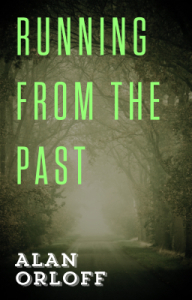
Alan Orloff is the author of Diamonds for the Dead (2010), an Agatha Award finalist for Best First Novel. He also writes the Last Laff Mystery series (Killer Routine
(2010), an Agatha Award finalist for Best First Novel. He also writes the Last Laff Mystery series (Killer Routine (2011) and Deadly Campaign
(2011) and Deadly Campaign (2012)) and has three e-book originals, THE TASTE (horror/thriller), FIRST TIME KILLER (thriller), and RIDE-ALONG (suspense).
(2012)) and has three e-book originals, THE TASTE (horror/thriller), FIRST TIME KILLER (thriller), and RIDE-ALONG (suspense).
For more info, please visit his website: www.alanorloff.com
The post The Kindle Scout Program appeared first on Elizabeth Spann Craig.
November 9, 2014
10 Things to Know About Pitching Agents and Editors
by Colby Marshall, @colbymarshall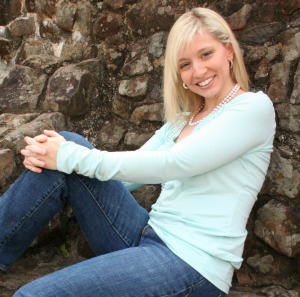
The first time I pitched agents in person was a terrifying, enlightening, fantastic, and awful experience. I met my now-agent that day, but I also made some mistakes that—trust me—I would be sure I never made again. (For Example: that bad joke I threw out as I sat down across the table from an agent with a sign hanging behind her that read, ‘No genre romances, no unicorns.’ The first words out of my mouth probably shouldn’t have been, “So, I guess you’re really going to love A Tail that Shines, my Unicorn Romance complete at 97,000 words.”
But, after a dodging a few cuss words, outrunning an intern who’d been promised a partnership if she returned wearing my scalp, and vowing to myself that I’d never joke about another directional sign at a pitch conference so long as I lived, I ended up taking the paper sack off my head for the last day of the conference in order to actually taste the food I’d already paid for once before heading home instead of sitting behind it blindly and in shame like I had the rest of the week.
And as I sat there, my paper bag mask turned lunch garbage catcher beside me, it occurred to me that writers didn’t deserve to spend their days at a conference—a place to learn pitching, networking, and the ins and outs of the industry—huddled under a paper sack, hyperaware that at any moment, they might be chased by an angry mob of interns with their own agendas or tripped by a group of outcast editors known as the Publishing Professionals Who Prefer Pensive-Only Prose (who actually make very real efforts to cause writers who display so much as a hint of thinking that any form of humor–especially satire–is allowed, condoned, or funny in any way to have “accidents” that might result in serious injuries to life or limb. But I digress…).
No! Writers should take off those grocery sacks, demand that intern give them back their glasses, and find a wet rag with which to wipe off all the gunky food items from the past six meals no one wanted to eat and so instead threw at them. They should learn from my idiocy and go out there and kick some agent-pitching rear end! (Only, don’t actually kick any agents in the rear end. That’s mistake number two, and the paper sack won’t cover this one. I hear it involves actual law enforcement being brought in.)
I give you the Top Ten Things I’ve Learned About Pitching Agents and Editors:
10.) Let your pitch do the standing out. This one is obvious, considering my epic unicornian mishap. While your goal is to be memorable, let your great idea—and its brilliantly rehearsed pitch—be what impresses the person you want to leave with that good memory. While you might think your stellar personality (or sense of humor) will win you fans, it’s almost always better to sell yourself by being professional and having a kickass pitch prepared and polished. No need to paint your face blue or perform a card trick to get noticed. You want to stand out in a crowd, not stick out like a pimple in a bridal photo.
9.) And speaking of sense of humor…proceed with caution. The agent you’re pitching might match you one for one on early 90’s TV references or enjoy a similar vein of bathroom humor, but these are things to be found out after you’ve sparkled and shone. Don’t whip out the redneck or blonde jokes–no matter how much of a bead you think you have on the pitch-ee–just yet, lest you strike out before you have the chance to leave the on-deck circle. For all you know, that agent was blonde before she hit the hairdresser’s yesterday. For all you know, he may just have a rare medical condition causing him to have an actual red neck.
8.) Go with the flow. No matter how many times you practiced your pitch in the shower of the hotel room before you run into THE agent or editor, I’ll give you nine out of ten that what one agent/editor is intrigued by in your pitch won’t be the exact thing that sparks the interest of the next agent/editor who listens to your exact same shpeel. With that in mind, go on with your practiced pitch, but watch for the moment during your pitch when the Pitchee’s eyes light up and their ears perk up. No matter how ready you were to launch into your five-point-plan for promotion involving your awesome, 12 billion person platform, if you see signs of life when you mention your character’s name is Dave, you better shift gear into Dave like it’s not only listed on your drive shaft, it’s also the speed you use most, the way you reverse, and what you look at in your rearview mirrors.
7.) Sell what you’ve got. And speaking of Dave and how that one agent seems to love his name, if you sense an agent latch onto something in your pitch, tell them about it. Tell whether your character loves or hates that concept that intrigues the Pitchee more than the concept you’d planned to talk about and why. Talk about the character’s mother, and how she got the idea to name him Dave because it was the name of the bartender in the pub where she gave birth to him because they were snowed in. Anything you’ve got in your wealth of information about the world you wrote that will help Dave stick in that agent or editor’s mind. Because even if you don’t sell the whole book right there, if you sell ‘em on Dave—who they already like—the book’s a hop, skip, and a jump away. After all, Dave’s the star!
6.) Don’t think you know everything about everyone. Your dream agent might be great (or heck, your dream agent might be anything from a pile of innocent, cuddly kittens to the Dark Lord Zargrath’s older, more evil, less hygienic brother. So maybe first things first would be that if you have a dream agent, know why they’re it. But I digress…), but one day you may find yourself in the fortunate situation to have to weigh multiple offers of representation at once. Talk to everyone, and keep an open mind. You may be shocked to find your gut screaming to go with someone completely different from your preconceived notion. Go with your gut every time.
5.) Know when to seal the deal, and know when to walk away. You can tell they’re interested, or you can tell it’s a bust. There’s no need to beat a dead horse, figurative or otherwise. If you make it through your entire pitch and the agent doesn’t bite at any of it, don’t filibuster. No one’s book is for everyone, nor should it be. That’s why you cast a wide net. Let the agents who slip through slip through without making them (or you) feel awkward and without prolonging the pain. On the flip side, if interest is radiating off the agent or editor opposite you, don’t assume it’s because there must be a mirror behind you and the Pitch-ee is a narcissistic bastard ready to primp and pay himself compliments. Finish your pitch, sell the points they seem most interested in the hardest, then put a button on it and wait for them to request pages. And when you those requests come, get home and send those suckers. No stalling. Don’t do a final pass of edits for three days. Have the requested materials waiting on their desks when they return to work the next day, while they’re fresh on their minds.
4.) If they’re not interested, they’re not. Speaking of walking away, I met one agent who only requested pages because they knew others would. They told me as much. I know I’m not the first blogger to say this, but it can’t be emphasized enough that you want your agent and, later, your editor, to be excited about your book. You don’t just want it to be on their mind. You want them to love it so much that they share an equal desire as you to see it succeed. Think of your agent and editor as gladiators representing you in the ring. Would you want a gladiator who looks around and goes, ‘Meh. I’ll fight for ‘em since everyone else seems to want to, but I don’t really personally give a damn’?
3.) Toss out your street cred like candy in a kindergarten classroom. Published? Let ‘em know. Give ‘em what they want…a reason to like you/be interested in you. Get a feel for the worth of each item in your repertoire, so you know how much time to devote to it. Don’t spend your whole day one it—or even your whole three allotted minutes—but do give your key resume items a mention. If you have a prior self-published novel that didn’t do so well, it may be best to not mention it. If its sales are currently putting your kid through college and you recently appeared on The Today Show talking about it, though, then you might want to let your potential agent know you have a base of loyal readers ready to buy your next book.
2.) What you think is important to your pitch might not be. Say your book is about a sentient truck that gets lost on a dirt road in Brazil, stumbles across a tribe of natives who take it in and teach it to live like they do. There may be an editor out there determined to buy the next book that comes their way featuring a dirt road. You just never know. You might frame your pitch around your fascinating Brazilian setting, but find later there’s a hole in the market for stories about sentient cars. Be ready to adjust your pitch if necessary. No amount of practice in front of a mirror can teach you what practicing in front of an agent or editor can. Use what you learn. (Unless, of course, you’re dead set against playing up the dirt road in your book. Then, I’d say you’re probably really stubborn and aren’t going to work well with an agent anyway if that small a request gets up your hackles).
1.) Trust your gut. I mentioned going with your gut before, and I really, really meant it. I meant it so much, I decided to say it again and make it number one on this list. One of the biggest setbacks in my writing career to date came from not trusting my instincts and being afraid to make the choices they told me. Your brain will always be there to weigh statistics and probability, and you need that, but this is a subjective business. If you don’t have a good feeling about something, don’t sign a damned thing. If you can get an offer from one agent, you can get an offer from another. It might take some time, but it’ll happen. All I can promise you is that if you have a bad feeling about working with someone, trust that feeling no matter what. However scared you are to make a choice that will keep your career from moving forward, you should be more scared of a choice that will set it back.
What’s the best pitch advice you’ve ever heard?
“Years ago, forensic psychiatrist Dr. Jenna Ramey’s special ability to “read” people and situations by making spontaneous color associations helped save her and her family from a psychotic serial killer: her own mother. Now, a captured killer holds the key to stopping a twisted chain of events already in motion, but he’ll only talk to one person: Dr. Jenna Ramey.”
Links:
Author’s website: http://www.colbymarshall.com
Buy link, Barnes and Noble: http://tinyurl.com/p7uhjvp
Buy link, Amazon: http://tinyurl.com/pbs3uts
Buy link, Powell’s: http://www.powells.com/biblio/1-9780425276518-0
The post 10 Things to Know About Pitching Agents and Editors appeared first on Elizabeth Spann Craig.
November 8, 2014
Twitterific Writing Links
by Elizabeth S. Craig, @elizabethscraig

Twitterific writing links are fed into the Writer’s Knowledge Base search engine (developed by writer and software engineer Mike Fleming) which has over 23,000 free articles on writing related topics. It’s the search engine for writers.
Beat Burnout with Expressive Writing: http://ow.ly/DdAIo @CherylRWrites
Getting Reviews for our books: http://ow.ly/DXFV2
Successful Querying: It’s Not All About The Letter. http://ow.ly/DdAIq @mmfinck @womenwriters
Creating Engaging Dialog by Using Subtext: http://ow.ly/DdAIt @CSLakin
You don’t need support to write: you own your own words: http://ow.ly/Ddzp8 @racheline_m @womenwriters
8 Elements to Nailing Your Plot & Owning NaNo: http://ow.ly/DhDMA @kristenlambtx
Quality critique services for your manuscript, novel, book, or proposal: http://ow.ly/DdAIw @CSLakin
Be Accountable to the Muse: the Writer’s Production Plan: http://ow.ly/DGFg6 @thecreativepenn
Writing Spies: 5 Dos and Don’ts: http://ow.ly/DGFg9 @piperbayard
7 Deadly Sins (If You’re a First Chapter) http://ow.ly/DGFga @Janice_Hardy
‘Every scene is either a fight, seduction, or negotiation.’ http://ow.ly/DGFgc @KenLevine
Top 10 Delights of Obscurity: http://ow.ly/DGFge
5 Writers Offer Lifelines for Post-MFA Despair: http://ow.ly/DGFgf @Furunati
What Makes an Amazing First Chapter? http://ow.ly/DGFgi @jenichappelle
5 Tips for Fleshing Out a Story: http://ow.ly/DGFgj @jemifraser
Self-publishing, Free, and Flexibility: http://ow.ly/DGFgk @JLeaLopez
NANO: Awesome Ways to Get it Done http://ow.ly/DGFgm @KateBrauning
Is Your Story Bloated? http://ow.ly/DGFgo @Jen_328
Stuck during NaNo? Tips: http://ow.ly/DGFgq @AlexSokoloff
Leveraging Scrivener for NaNoWriMo: http://ow.ly/DGFgs @Gwen_Hernandez How Romeo and Juliet Can Help You Write Your Next Book: http://ow.ly/DGOwj @HelenSedwick
Art vs. Commerce: Can Writers Make It Without Day Jobs? http://ow.ly/DGOhy @hollyrob1
How to Stick to a Writing Schedule: http://ow.ly/DGOwm @melaniepinola
3 Common Writing Myths and How One Writer Challenged Them: http://ow.ly/DGOws @saulofhearts
How Great Writers Find Their Writing Voice: http://ow.ly/DGOwv @Woelf20
12 Essential Essays for Writers – The Electric Typewriter http://ow.ly/DGOwz
Elections in crime fiction: http://ow.ly/DXH0b @mkinberg
The Great Theme of Childhood: Coping: http://ow.ly/DvtNM @camillelaguire
How to write a novel (in a 30 days): http://ow.ly/DGP8V @mailonline @chrisbaty
When is it okay to quit? | Brad R. Torgersen http://ow.ly/Dvtwo
Typographic Sanity: http://ow.ly/Dvt0G @parisreview @DanPiepenbring
Does British Humor Translate Across the Pond? http://ow.ly/DvsTp @pubperspectives
5 easy ways to research your novel: http://ow.ly/DvvYk @nownovel
Go to Your Worst Case Scenario…and Back: http://ow.ly/DvvYg @pospositive @fearlessstories
5 ways to follow up with an editor or agent: http://ow.ly/Dvt6I @ElawReads
7 things 1 writer would do before publishing a book, if she could do it over again: http://ow.ly/DvvCw @cleemckenzie
In Defense of Spoilers: http://ow.ly/DvsKX @dkthomp
Query Question: Revising novel when on submission to agents: http://ow.ly/DvvIx @Janet_Reid
Fractal Conflict in Storytelling: http://ow.ly/DvtzX @brianstaveley
Tips and thoughts for writing endings: http://ow.ly/DvteB @JennyCrusie
Reviewing? What’s your motive? http://ow.ly/DOEu5 @Porter_Anderson @ThoughtCatalog
5 Tips for Plotting a Mystery: http://ow.ly/DusoX @PamelotH
Writer Legacy Issues: http://ow.ly/DusoW @chrisschiller @scriptmag
10 Reasons Why The Gatekeepers Of Self-Publishing Have Become… You: http://ow.ly/DusoS @selfpubreview
Marketing Tip: Put Your First Chapter on Your Website: http://ow.ly/DusoO @mariamurnane
Your Author Platform Is Not Your Social Media Following: http://ow.ly/DusoN @brooke_warner
Should writers only query female agents for women’s fiction? http://ow.ly/DusoK @Janet_Reid
Creativity On Demand: Why You Need BICHOK Time: http://ow.ly/DusoI @CarlaYoung
When Your Character’s Diagnosis Becomes Your Own: http://ow.ly/DusoF @BTMargins
Why No Advice Is Perfect: Character Emotions: http://ow.ly/DusoE @jamigold
For the Writer Who Wants to Create in the Mornings: A Guide to Help You Wake Up Earlier: http://ow.ly/DusoC @bemorewithless
Tips for More Complicated POV Issues: http://ow.ly/DusoB @jodyhedlund
Formatting—The Difference Between Mediocre & Magnificent: http://ow.ly/Dusox @WyrdingWaysPres
Are we still not ‘prepared’ for digital progress? http://ow.ly/DNKEP @Porter_Anderson
On Riding and Writing Boldly: http://ow.ly/DnSvT @mcfawn
The Difficulty Writers Have with Identity: http://ow.ly/DnSvN @losapala
NaNo Pep Talk from @ChuckWendig http://ow.ly/DGP1z
What is Past is Prologue: http://ow.ly/DnSvJ @storyfix
6 Tips for Writing Minor Characters: http://ow.ly/DnSvG @robinrwrites
The Secret to Crafting Genuine Characters for Your Novel: http://ow.ly/DnSvD @CSLakin
Selling Your Story: The Zombie Ice-Cream Wagon Gambit: http://ow.ly/DnSvA @yeomanis
Starting a Group Blog: http://ow.ly/DnQkV @madelineiva
An exercise to help write better dialogue: http://ow.ly/DnSvv @writeabook
How To Help Budding Authors (without killing their spirits) http://ow.ly/DnSvt @aplazar
Figuring out your book’s ending: http://ow.ly/DnSvn @glencstrathy
7 Tips for Metadata Magic for Self-Publishers: http://ow.ly/DnRrt @JFBookman
The optics of poetry http://ow.ly/DnSvh @Jim_Murdoch
Finding the Confidence to Write what You Want: http://ow.ly/DLOBy @LyndaRYoung
Bad Advice for Writers: NaNoWriMo edition: http://ow.ly/DGOWu @GeneDoucette
Foreshadowing in crime fiction: http://ow.ly/DLPzc @mkinberg
How to Make Subplots Work: http://ow.ly/Dmnzt
A blog dedicated to writing and resources centered on race and ethnic diversity: http://ow.ly/Dmnzs
10 things you can do in the middles of novels http://ow.ly/Dmnzr
Finding the Time to Create: http://ow.ly/Dmnzq @BalzerDesigns
The Query as a Plotting Tool: http://ow.ly/Dmnzn @janice_hardy
Sites and links for writers: http://ow.ly/Dmnzj
Don’t Let ‘Play-It-Safers’ Talk You Out Of Writing: http://ow.ly/Dmnzh @JonathanGunson
On Writing Memoir: How to Begin http://ow.ly/Dmnzg @ClaireJDeBoer
5 Ways Writing Can Make You Braver and Happier: http://ow.ly/Dmnzf @HarrietLerner
Allowing Your Book to Be True to Itself: http://ow.ly/DIKKu @PatrickRWrites
Braving Your Second Draft: http://ow.ly/Dmnze @KMWeiland
A site that helps you find the word on the tip of your tongue: http://ow.ly/Dmnzc
8 Proofreading Tools for Beta Readers: http://ow.ly/DhOUr @CKmacleodwriter
Minimalism in Writing: http://ow.ly/DhOUo @rsmollisonread
Writing Religious Thrillers And Storytelling Lessons From Commercial TV: http://ow.ly/DhOUh @simontoyne
3 ideas for fixing the publishing industry: http://ow.ly/DhOUd @LJSellers
Hindsight is 20/20: 1 Writer’s First Year in Self-Publishing: http://ow.ly/DhOUa @misskyokom
Editing psychosis: recognize the signs: http://ow.ly/DhOU4 @bwilliamsbooks
How To Write A Book In A Month: http://ow.ly/DGONC @ninaamir
The post Twitterific Writing Links appeared first on Elizabeth Spann Craig.

